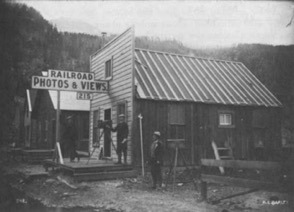Low-slope roofs were a late invention in building construction. This was mostly because steep-slope roofs exhibited superior water-shedding properties. Also, before industrialization, much of the manufacturing of goods was done in people’s homes by hand or with basic small machinery, so there wasn’t a need for larger buildings.
But as the Industrial Revolution progressed, it became clear that larger commercial buildings were needed to house heavy machinery to accommodate factory-style production. But larger buildings meant an increased cost to build and required more space to continue implementing the steep-slope design. Thus, the low-slope roof was developed, which significantly decreased construction costs and the amount of space needed.
By the 1920s, low-slope roofs could be found on factories in large cities, and they quickly became a symbol of modernity. In fact, “false-fronts” were added to buildings to disguise steep-slope roofs. The style became popular, especially in the West, but it also spread internationally and created a more urban atmosphere.
Steep-slope roofs remained a staple of most residential homes, even to this day, while low-slope roofs may be found on commercial, agricultural, industrial, and multi-family structures, as well as structures like airplane hangars that don’t fall neatly into any of these categories.

False-front building (1898)
Roof Assembly
Since low-slope roofs aren’t able to shed rainwater or snow quickly, waterproofing through various installations is necessary to keep moisture out of the roof assembly. The first low-slope roof membranes were coal tar, which, at the time, was a waste product from coal-gas production, and is now a byproduct in steelmaking. By the end of the 1800s, asphalt was introduced as a low-slope roofing membrane, which is a byproduct of the crude oil-refining process. Both installations were layered and adhered with roofing felt over a wood deck. Thus, built-up roofing (BUR) was invented. Over time, this installation ranged from organic materials (paper or cloth) to asbestos to, eventually, fiberglass after WWII. The 1960s gave rise to other roofing membranes that exhibited excellent waterproofing and durability properties, and are collectively known as either a modified bitumen or a single-ply roofing membrane.
The first roof decks were constructed of thick wood decks and supported wood beams. Wood decks greatly affected the level of stress on the roofing assembly. Naturally, wood decks have a limited ability for thermally-induced expansion and contraction, and are susceptible to expansion and contraction cycles due to moist air rising from the interior of the living space to the underside of the deck. This was offset by the dark-colored rooftop, which allowed for heat to enter the deck, dry out the moisture, and contract again.
Roofing insulation didn’t appear until the 1960s when air conditioning was introduced and the cost of energy increased. Insulation gives rise to a unique complication. Before the use of insulation, heat easily transferred through the roof deck and membrane. Contrarily, insulation impedes the rate of heat transfer, which can be problematic. If heat remains trapped in a roofing system, it can negatively affect the roof’s durability and service life. Proper installation and maintenance are required to restrain these effects.
Conclusion
Low-slope roofs were originally invented to accommodate changes that the Industrial Revolution introduced to manufacturing processes and commercial enterprises. Prior to that, all roofs were of a steep-slope design. But due to the low-slope roof’s inability to shed water as readily as steep-slope roofs, unique roofing materials were developed. Nowadays, the steep-slope roof is mostly implemented on residential structures, while the low-slope is implemented on commercial and industrial structures.
Additional Commercial Inspector Resources:
Inspecting Low-Slope Roofs Course for Commercial Property Inspectors
Low-Slope Roof Components
Low-Slope Roof Construction and Failure Assignment of Responsibilities

